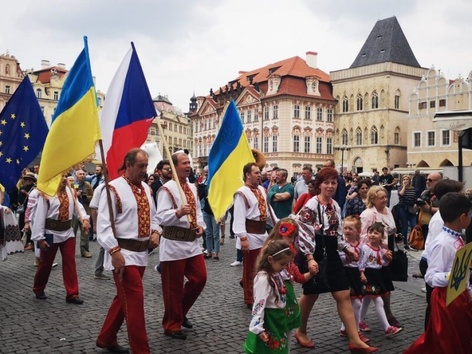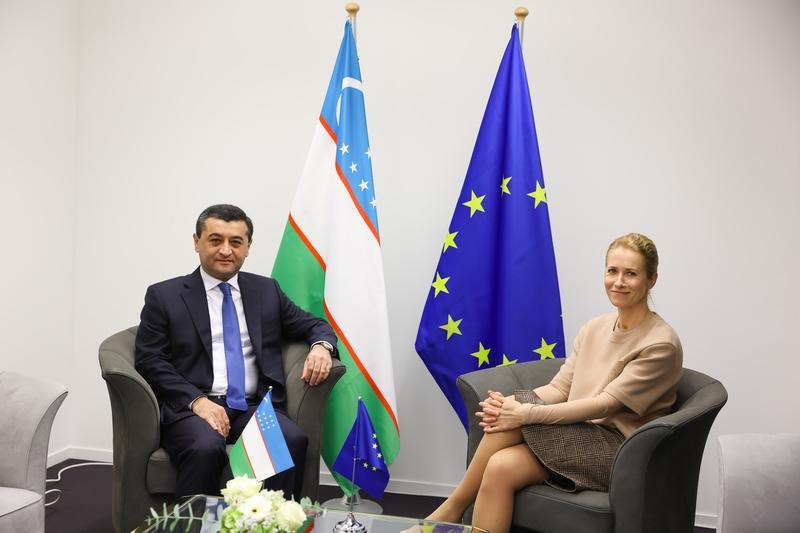
Costs of Accommodating the Most Ukrainian Refugees Per Capita in the EU: The Czech Case (Part One)
Costs of Accommodating the Most Ukrainian Refugees Per Capita in the EU: The Czech Case (Part One)
On September 3, an estimated 70,000 people gathered around Wenceslaus Square in central Prague to protest against the incumbent government of Czech Prime Minister Petr Fiala. The demonstration centered on cost-of-living complaints incurred by increasing energy costs, rapidly rising inflation and perceived overly generous aid to Ukraine. While the protest was largely driven by pocketbook factors, the 427,000 Ukrainian refugees who were granted temporary protection status (equivalent to 4 percent of the Czech population, which is the highest per capita in the EU) certainly played a factor.
The Wenceslaus Square protesters represented a small but vocal section of Czech society. Organizers of the event espoused anti-NATO and pro-Russia messaging and have been linked to anti-globalist and anti-capitalist movements (Forum 24, September 9). These are indeed fringe views in the Czech Republic. According to a comprehensive May 2022 study, an overwhelming 84 percent of Czechs view Russia as a threat and 78 percent said that European Union countries should impose the strongest possible sanctions on Russia even if it means the price of fuel or other products increases (Globsec.org, May 31). Moreover, those in the Czech Republic who considered migrants a threat to their values and identity declined from 72 percent in 2020 to 32 percent in 2022 (Globsec.org, May 31). Discontent over energy prices may be widespread, but solidarity with Ukrainian refugees remains high.
While those losing patience with supporting Ukrainian refugees are in the minority, they are well represented by parties that garnered significant percentages of the 2021 legislative vote to form the current parliamentary body. The “right” and “left” wings of the political spectrum converge on questions of immigration to form an ethno-socialist position that shuns immigration while advocating for more social spending for “working Czechs.”
This convergence is not just theoretical. Far-right leader of the Freedom and Direct Democracy party, Tomio Okamura (9.56 percent of 2021 vote) has made ideological inroads with Communist Party leader and staunch Russia supporter Vojtěch Filip (3.6 percent of 2021 vote). Former Prime Minister and main opposition leader Andrej Babiš (27 percent of 2021 vote), on the other hand, was perhaps unfairly criticized by Fiala for immigration fearmongering (Aktuálně, March 28). Babiš has, in fact, highlighted the economic costs of Ukrainian refugees rather than focusing on the “social and cultural changes,” with which the fringes are most concerned.
In truth, most Czechs are willing to bear the economic costs of accommodating refugees up to a point. Although the war has only lasted seven months, many in government anticipated that the war, and by extension the refugee flow, would subside sooner. The Czech Ministry of Interior released a strategic document in April 2022 proposing three scenarios: (a.) rapid stabilization in Ukraine and an influx of up to 300,000 refugees, (b.) gradual escalation corresponding with around half a million refugees, and (c.) extreme escalation in the war leading to one million refugees seeking asylum in the Czech Republic (Mvcr.cz, April 13). According to the most recent data, 427,000 Ukrainian refugees have been recorded in the Czech Republic (Unhcr.org, September 6). This number is approaching the second scenario, which projected an intake of between 500,000 and 600,000 Ukrainian refugees, corresponding to a long war and sustained erosion of the Ukrainian economy.
Given the drawn-out nature and inherent uncertainty of the second and third scenarios, the Ministry of Interior only estimated the costs of the first scenario (stabilization) at 54 billion korunas ($2.2 billion) (Mvcr.cz, April 13). Czech Finance Minister Zbyněk Stanjura, from the Civic Democratic Party, provided a similar per year estimate of 50 billion korunas ($2 billion) (iRozhlas, April 8). Prague’s budget for 2021 was 1.9 trillion korunas ($77 billion), meaning that a 50 billion koruna expense would constitute 2.6 percent of national spending (Vlada, September 2). This proportion of national spending is roughly equivalent to the Czech Republic’s military expenditure, and it is proportionally more than twice as large as total US foreign aid spending (Foreignassistance.gov, September 9). The most expensive services for refugees are transfer payments, housing, healthcare, care for elderly and children, internal security, language training and schooling for Ukrainian youth.
Due to the high percentage of women (44 percent) and children (35 percent) applying for temporary protection, the Czech government anticipates low labor force participation and slow integration into the national economy (Mpsv.cz, July 17). Prague is particularly concerned over stressing the publicly funded healthcare and education sectors, which are among the most understaffed in the EU. Only 17 percent of the 427,000 refugees recorded are working-age men. This starkly contrasts with immigration patterns in years previous when men left their families to work in the Czech construction, automotive and manufacturing industries (DW, June 6).
Given the time of the war (right after Orthodox Christmas), many Ukrainian workers had returned home when Russia invaded on February 24. Immediately following the invasion, Ukrainian President Volodymyr Zelenskyy signed into effect a general mobilization law forbidding working-age men from leaving the country. This has exacerbated acute labor shortages in the Czech construction sector and heavy industry, which have become quite dependent on Ukrainian labor in recent years.
As with any catastrophic event, attention and support dissipate as the initial shock wears off. This phenomenon, known as “war fatigue,” has spread unevenly through the Czech body politic varying by region, party affiliation and profession. On a more macro scale, war fatigue is spreading at an uneven pace throughout the EU as demonstrated by varying levels of commitment to sanction adherence. This growing attitude has the potential to lower the will of states distant from the war to incur significant costs, especially as energy prices rise. The unbalanced burden sharing of the Ukrainian war in the EU could lead to resentment and challenge the continent’s resolve.


